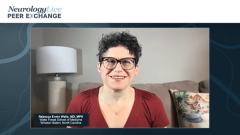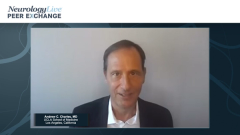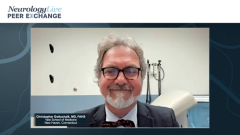
Behavioral Treatment Strategies for Migraine Management
An expert panel discusses migraine prevention with the use of behavioral therapies such as cognitive behavioral therapy and stress management.
Episodes in this series

Jessica Ailani, MD: Rebecca, maybe you could talk about mindfulness and some of the behavioral aspects of nonpharmacological treatments. This is an important point. Behavioral treatments are extremely helpful additional treatments in migraine. They can be expensive, which patients aren’t always willing to pay for, but there are some types of therapies that come on after simple things, like going out for a walk and just looking at your environment. Maybe you can mention some of these ideas and things patients might be able to do on their own.
Rebecca Erwin Wells, MD, MPH: We’ve been connecting research looking specifically at mindfulness. One reason I was drawn into looking at this was because so many patients have adverse effects and problems with many of the older medications. They come in saying, “I have problems, and I want to try a nondrug approach.” We’ve been doing research evaluating mindfulness, recognizing that it can be a very powerful technique. The clinical trials we’ve done have been in addition to medications. A lot of the research is looking at behavioral treatment options. When I’m talking about behavioral treatment options, I’m referring broadly to cognitive behavioral therapy, biofeedback, relaxation training, stress management, mindfulness, and even newer therapies—third-wave or new-wave treatments, like acceptance and commitment therapy. There are a lot of options for these interventions. It’s important to recognize that these are things that have been shown with research that can be synergistic with medication. It’s not an either-or but an actual both.
Sometimes patients will say, “I want something natural.” And I have to joke. I had a medical school professor who said, “You know cyanide is all natural.” So it’s really important that a lot of these behavioral treatment options recognize different modalities. There are so many options.
Some do require a therapist or a psychologist. Cognitive behavioral therapy requires somebody with the skills to be able to teach that. But as you mentioned, there are so many wonderful opportunities, especially with the pandemic. One thing that has been fascinating to see is the dramatic increase of interest in mindfulness with online options and more opportunities now available. There are so many apps available as well.
When beginning a program for patients with migraine and specifically focusing on an intervention like mindfulness, I suggest taking a class and having an instructor. Some of the things that we find when people are learning or practicing a new skill is that initially, their stress level may go up as they tune in to realizing and becoming more mindful of how stressed out they are all the time. Beginning some of these interventions, there may be a hesitance to continue because they’re feeling more stressed. In reality that’s the time to push through and say, “You’re more stressed because you’re more aware of it. So what are we going to do?”
When we’re talking about stress, I say, “We all have stress.” We’re not human beings if we don’t have stressful things happening. What we can do is change the way we respond to those stressors. This brings up what we talked about a little: triggers. The approach that I take for patients is focusing on overall healthy lifestyles and not creating an avoidant pattern of behavior. Avoidance behavior can create a lot of anxiety and increase this interictal burden where people are constantly on edge and afraid of what they’re going to do between attacks for fear that they’re going to do something to set off the attack.
This comes to Andy’s point about guilt. Andy, I’d be interested to hear your perspective about what I say. We think of migraines as a genetic disease, and we don’t fully understand the genetics. We’re still trying to figure it out. Usually, I’ll reference a family member whose migraine they already told me about. Then we think about this as a genetic condition. No matter what we do, sometimes you’re going to have individual attacks. But our goal is to decrease the frequency, decrease the likelihood that they happen, and then have a plan in place so that when they do happen, you feel comfortable that you can treat it effectively.
Jessica Ailani, MD: That’s a great point. Andy, I’d like to hear [your perspective] because I definitely struggle with patients who obsess over the dietary triggers. Yes, some patients probably have a dietary trigger or at least firmly believe that they do, to the point where it’s probably healthier to let them believe they have a dietary trigger. But as you mentioned earlier, the research around dietary triggers is pretty much nonexistent. More likely than not they’re premonitory, or prodromal—like chocolate or carbohydrates.
Andy, how do you handle these situations where someone has a fixed belief, or family members are blaming the patient that there must be something they’re doing that’s causing this?
Andrew C. Charles, MD: It’s a little like the film Good Will Hunting, where Robin Williams keeps saying, “It’s not your fault. It’s not your fault.” I keep repeating that gently while emphasizing that there are things they can do that are quite meaningful. But fundamentally, it’s in your genes. It’s in your physiology. It’s a disease of the nervous system. In some ways, you have to accept that this is your lot [in life], you’re in with a lot of others, and we have some great therapies. It’s not that you’re going to be able to identify a single trigger and that will cure you of migraines. It’s not going to happen, so that’s the bad news. But the good news is that we have a lot of approaches that can help.
The other thing I will emphasize is that many patients will recognize that every time they have a trigger, they don’t have an attack. It’s only sometimes, but it occurs. It requires a little gentle pointing out, which causes some self-evaluation and where something like a diary can be helpful. Not that you want people to be obsessively recording every potential trigger, but even for a short period to get them to recognize that some dietary triggers in some circumstances may lead to an attack, it’s not that single factor all the time that’s the most important.
Jessica Ailani, MD: Great points. We’re talking about hanging in there and having hope, so I hope you’ll all join us for our next segment, when we’re going to talk about some of these newer treatments, especially valuable for patients who are close to giving up and feel like it’s their fault and they’ve got nothing left. We’re going to talk about some of the novel treatments.
Thank you to our audience for watching this Neurology Live® Peer Exchange. I hope you’ve enjoyed watching this program as much as we’ve enjoyed spending this time together. If you’ve enjoyed this content, please subscribe to our e-newsletters to receive upcoming Peer Exchanges and other great content right in your in-box.
Transcript edited for clarity.
Newsletter
Keep your finger on the pulse of neurology—subscribe to NeurologyLive for expert interviews, new data, and breakthrough treatment updates.






























